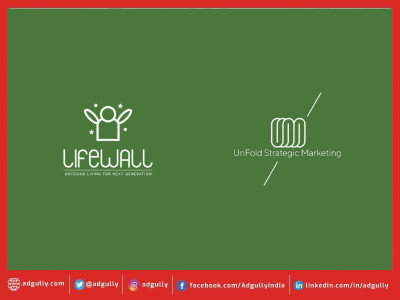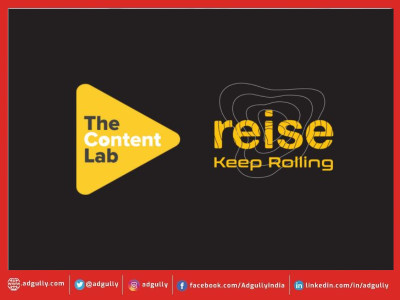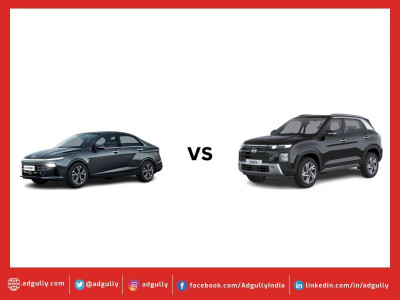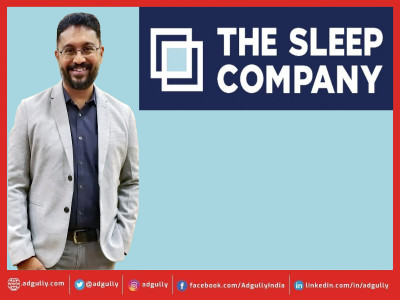"Successful rebrands are grounded in business logic and are not exercises in vanity"
For the past many years, the advertising industry has been offering design and branding as part of the overall advertising services to their clients. However, in the last two decades, we saw the approach to design taking a shift with more focus on research, strategy and a scientific process by solving complex challenges. Today, several design consulting companies that had entered India about a decade back are delivering ideas, expertise and solutions to clients with a process driven approach to design. Many clients have also realised how important design and branding are in a brand’s journey. More and more brands are seeing value in it and are also investing in design and branding so that they stand out in the market place and are also able to easily connect with their target audience.
To get a clearer perspective and a deeper insight on strategy and design, and how the business has evolved in the last two decades, Adgully caught up with Lulu Raghavan, Managing Director, Landor & Fitch, to find out how their company has grown and delivered value to clients and also how Design & Strategy has emerged as a highly specialised field.
Design today has a larger role to play in a brand’s journey. How much of strategic thinking goes in when you are working on a complete rebranding exercise for a product?
The short answer is that a lot of strategic thinking is involved. Successful rebrands are grounded in business logic and are not exercises in vanity. Sharp customer insights based on primary research inform the brand strategy, which has to be relevant, different and energising for the brand. Design is used to create a holistic brand experience, where every touch point is viewed as an opportunity to engage more deeply with the customer in a way that is consistent with what the brand wants to be famous for. It is not just about a logo or a packaging change, but an entire reimagination of what the brand stands for, how it will add value to a customer’s life, how it manifests itself across channels, and what the implications for the organisation are in order to deliver the new brand promise. We helped Oben Insurance transform itself to become Digit, which has recently joined the league of unicorns. Every element of the rebrand – from the Brand Driver Platform of “Hello Simplicity” to the values of the organisation, the visual identity and the voice of the brand – was strategically grounded. The brand experience brings to life CEO Kamesh Goyal’s mission to create truly differentiated insurance products and experiences that even your grandmother can understand and purchase.
What do you look for in a brief from a client while creating a brand new product right from the product design? How important is research here and what is the role of research?
The starting point is the conviction of the client about the business. Getting to clearly understand their ambition and their outlook is invaluable for us in being a strong partner to them. How badly do they want to succeed? How much risk are they willing to take? How open-minded are they to new perspectives and a different way of doing things?
We also want to know how much belief the client has in the power of brand to impact the growth of the business, and an understanding of how brand can drive value.
Then it is about the consumer segment that is being targeted. Here, research (both primary and secondary) is critical in painting a vivid portrait of the ideal customer and her world in its entirety, her attitudes towards the category and her unmet needs to serve her better.
Research is also immensely helpful in understanding the category dynamics, competitive brand perceptions and preference drivers. At Landor & Fitch, we regularly use proprietary databases like BrandAsset Valuator and Brand Z to have more data-driven approaches to brand strategy.
Once we’ve developed prototypes of the strategy and the potential brand experience, research can be used again to see how consumers react to different ideas. We commission to understand not what they like and dislike, but which concepts are likely to result in more favourable business metrics.
Finally, we also set up brand trackers for clients once the rebrand is done so they can measure progress against agreed metrics.
The Mahindra Group has done a brilliant job of keeping an eye on its brand perceptions on key parameters across varied audiences. This data helps them calibrate their brand-building strategies annually.
As a strategic and design consultant, do you follow any design process that will help you deliver the best output? Is there any design mantra that you follow to get the best results or output?
Our overarching mission is to create work for our clients that is ‘Extraordinary, by Design’.
We have four important criteria to judge something as extraordinary:
- Original – beautifully crafted and emotionally moving
- Remarkable – has talk value
- Challenges convention – a true insight that solves a pain point
- Commercially outstanding – delivering beyond ROI
A big brand idea is an essential ingredient for great creative work. Our strategic tools and processes help us get to this outstanding idea. After that, the extraordinary talent of the team, our culture and our approach to creativity take over. We believe every project benefits from a strong triad partnership between the client guardian, strategist and designer. We do a lot of brainstorms and sketch sessions. We use prototyping and tissue sessions to test the direction of ideas with clients. We take inspiration from outside the category. We get critical inputs from regional and global teams. We challenge the work and constantly push it to make it the best it can be based on the brief. Ultimately, it is not process but the genius of individual talent nurtured by a team approach that leads to breakthrough work.
Design thinking has moved beyond logos and identity. Today, the canvas is wider and larger. Where do you think Design and Strategy is headed in the next 5 years, especially when the growth of digital and use of digital has increased considerably?
The brands of the future will need to be super close to culture and consumers in order to make a meaningful difference. Both are changing rapidly and the agencies that have their pulse on the zeitgeist will clearly add the most value.
Attracting the distracted consumer will require great strategy. Visual appeal will set the brand apart from a sea of sameness.
Brand experiences will be grounded in strategic rigour (based on data) and magical in their touch and feel. Physical, human and digital touch points will seamlessly interact with each other and co-exist to spin new brand stories for consumers.
I see a very bright future for strategy, design and of course, digital.
Talent in the design space is a scarce commodity even as the market and need for design is expanding. How do you spot talent and groom them to be successful design thinkers?
The best talent are the ones who pro-actively make their pitch to agencies, demonstrate great hunger, wear a can-do fearless attitude and back it all up with credibility (education, portfolio, references).
It is the duty of every creative leader to constantly search for new talent in new places. This requires leaders to have laser focus on building the reputation of the agency as the most desirable place for designers and strategists. And creating a culture rooted in creativity and one that is inclusive, diverse, high performing, fun and growth oriented. As MD of Landor & Fitch India, my top priority is culture and reputation building.
Is there a shelf life for designs? Today, ROI and performance is spoken on every marketing and communication that happens. So, how does one evaluate the performance of a design and its impact in the marketplace?
It really depends on the brand and what it stands for. Some brands thrive on constant change. Others endure for decades with very little change. Design must be in the service of the brand and its desired customer experience. The best way to evaluate a design’s impact on the brand is in perceptions of the brand on various imagery attributes. Of course, in some cases like packaging design and product design, it is possible to attribute improved performance to design alone, but the true impact of design is much harder to isolate in areas like corporate rebranding, retail, design, and customer journey design.
An often quoted study conducted by the Design Management Institute proves the value of design. It shows that the index of companies that are design-driven beat the S&P 500 by 211%.
McKinsey conducted research on the business value of design and found a strong correlation between high MDI (McKinsey Design Index) scores and superior business performance.
Where is the future of design headed? What kind of new trends will we get to see in the design space, especially in the mobile space where UI/UX plays a key role in engaging with the audience?
The world will face increasingly larger and more complex global problems (from the need for a greener planet to social equality and many more) that designers alone won’t be able to solve. It will require a multidisciplinary and ecosystems approach. So, we will see a shift from working in isolation/ small groups to collaboration on a much broader scale with more diverse minds.
Sustainability will become mainstream as concern for the planet becomes a global as well as local priority. We will see sustainable spaces, sustainable packs, sustainable brands and even fully sustainable companies.
COVID-19 has put the spotlight more on health & wellness than ever before, which will be considered in all aspects of design.
Travel will become more inward (finding a sense of peace at home and with ourselves) and outward (YOLO fulfilment) at the same time.
As businesses seek to return to some form of pre-COVID-19 buoyancy and start to think about the right mix of #WFH and #WFO, we believe that Workspace Design will be one of the most important design considerations in 2021.
Businesses can not just return to the workplace without reimagining the experience in its entirety for employees. I am not talking about office design which is just about layout, headcount, resources and utilities. Workspace design is a deeper discipline and mindset that connects office design to brand. It dictates the journey, the overall experience and ensures that the brand’s values and function are reflected in the physical, human and digital space, much like retail.
The most progressive businesses will be thinking about the six imperatives of Workspace Design – culture, interaction, function, sustainability, architecture and technology.
A well thought through strategy on Workspace Design can help businesses in forging stronger relationships with their employees, who, in turn, will become great brand ambassadors.
In the mobile space, personalisation, curation and experiences will rule the roost for apps hoping to win the hearts of consumers. Technologies like Voice, AR and animations will be used extensively for creating differentiated experiences.
School on mobile may become the new norm for the next generation of learners.
Authentic and hyperlocal experiences will be sought after in hospitality.
And finally, the power of design to lift an experience out of the ordinary to the realm of the extraordinary will be widely understood and valued.


























Share
Facebook
YouTube
Tweet
Twitter
LinkedIn